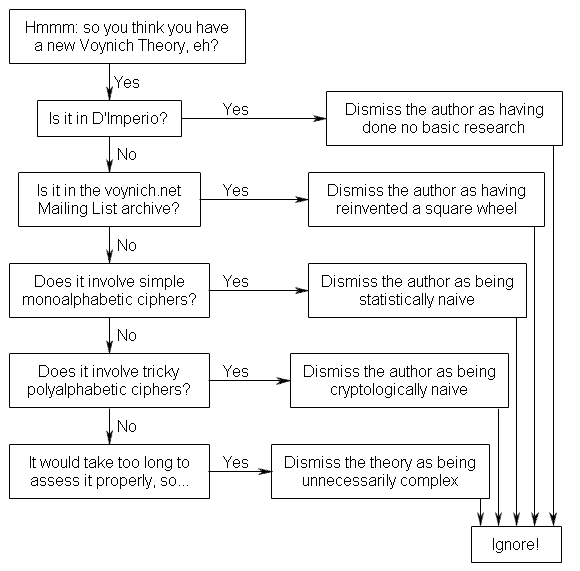Are you an historian with an enciphered document you want to read? If so, here’s a link to an article you really ought to have a look at: “Cryptanalysis and Historical Research” by Eric Sams, from Archivaria 21 (1985-1986) [it’s actually an extended version of two earlier articles he wrote for the TLS in 1977 and 1980].
There’s tons of good stuff in Sams’ article, such as a mention of the table of early shorthands in Isaac Pitman’s book “The History of Shorthand” (which I saw in Leeds University’s Brotherton Collection): this table really ought to be on the web somewhere (please let me know if you happen to find a copy). Incidentally, The Shorthand Place website has a fantastic list of shorthand collections in UK libraries.
But I know what you’re thinking at this point: “What does Sams think of the Voynich Manuscript?” And the answer is, well, not an awful lot:-
“Of course some archives are likely to remain dark and impenetrable. William Friedman, one of the world’s greatest cryptanalysts, spent many a fruitless hour on the Voynich manuscript, attributed to Roger Bacon, which is fluently written in a natural-looking yet wholly unintelligible language.”
AKA, “if it looks tricky, don’t even go there”. But wait: Sams isn’t finished yet…
“The British Library […] also owns an original volume of an equally obscure manuscript which begins by saying in plain English that no one will ever unravel the meaning of what follows.”
But… which manuscript would that be, Eric? Unfortunately, Sams – the teasing swine! – fails to say. (Please email me if you do know!) Flicking through the British Library’s manuscript catalogue, the best candidate appears to be “The Subtelty of Witches” by Ben Ezra Aseph (1657) [British Library MS. Add. 10035], written entirely in cipher… might that be it? Also: BL Ms Add 32305 contains 39 folios of “unidentified cipher keys”: which sounds like a lot of fun. 😉 But I digress! Sams finishes his discussion thus:-
So be it; many tracks lead into such caves. but none ever come out. The true treasure-chests are much more likely to be those which clearly once had real keys, later lost or mislaid.
Well… speaking as a long-term denizen of the Voynich Manuscript cave, I have to admit that Sams might just have a point here. But no sense of romance, damnit! 🙂
PS: fans of Sams can find a list of his cryptological papers here.


